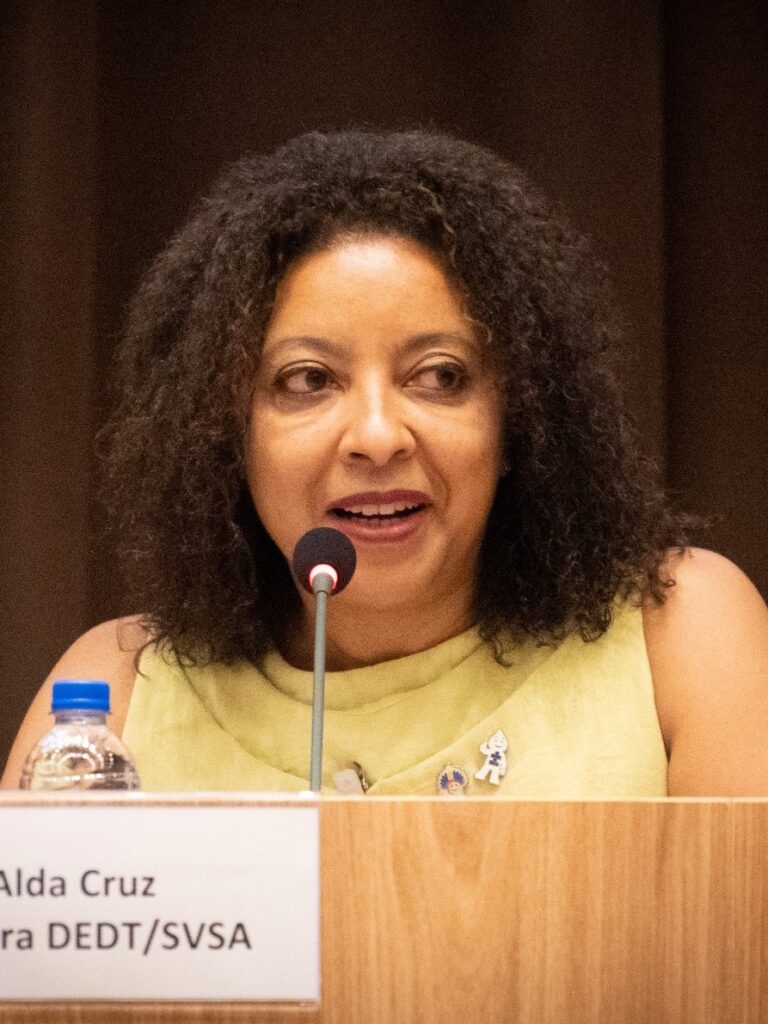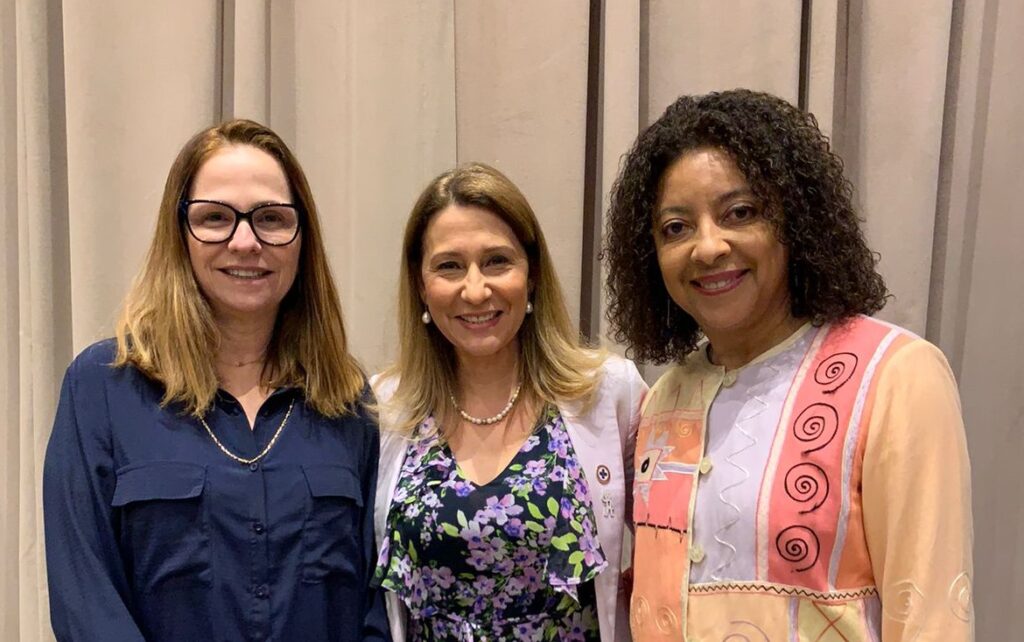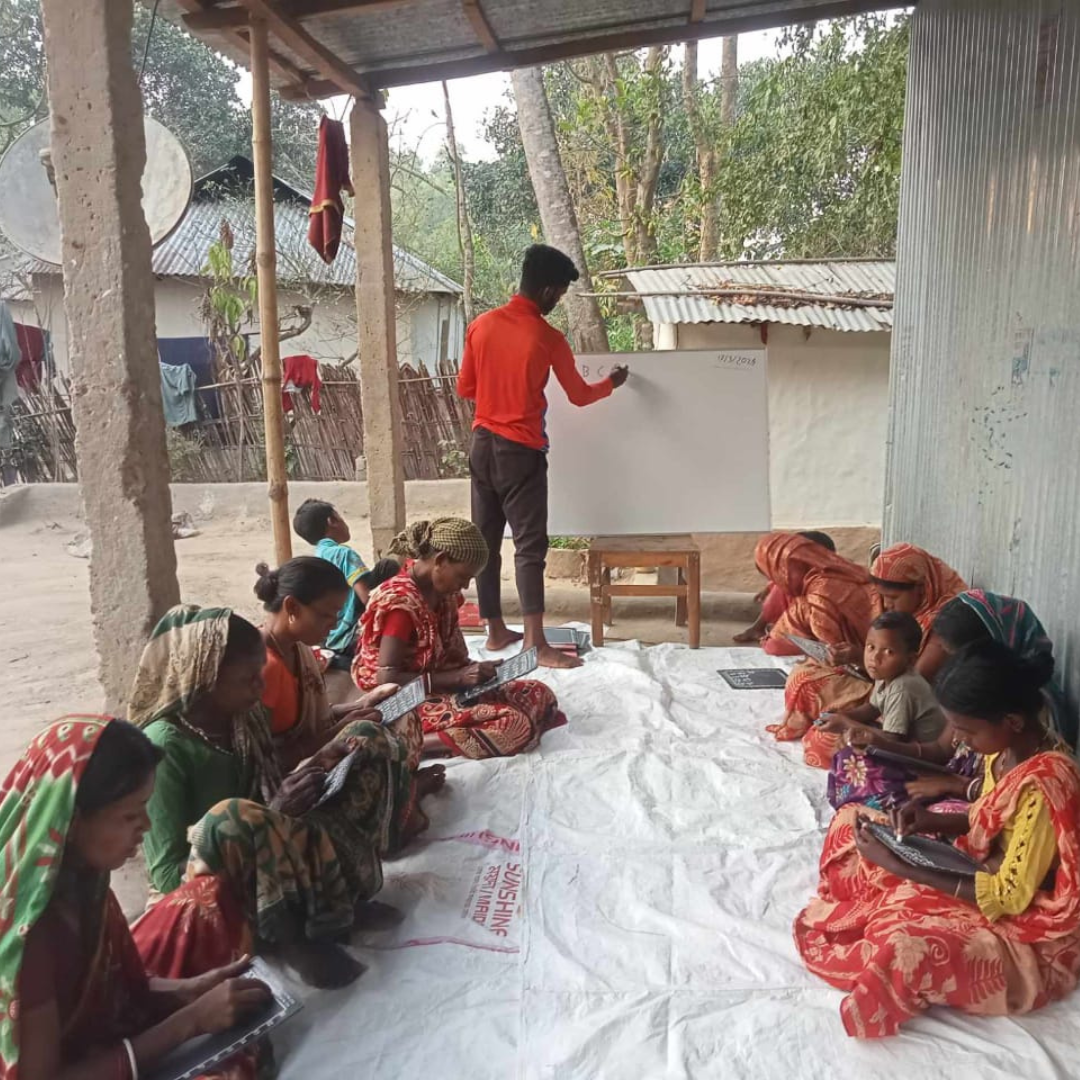
Dr. Ethel Noia Maciel, Secretary
Health and Environment Surveillance Secretariat (SVSA)
Ministry of Health, Brazil

Dr. Alda Maria da Cruz, Director
Dept. of Transmissible Diseases (DEDT)
Health and Environment Surveillance Secretariat (SVSA)
Ministry of Health, Brazil

Dr. Sandra Maria Barbosa Durães,
General Coordination for Surveillance of Diseases in Elimination (CGDE)
Health and Environment Surveillance Secretariat (SVSA)
Ministry of Health, Brazil
The worldwide implementation of multidrug therapy (MDT) according to World Health Organization (WHO) guidelines in the 1980s dramatically decreased the prevalence of Hansen’s disease (HD). However, over the past decade, the detection rate of new cases worldwide has remained almost unchanged, with Brazil, India, and Indonesia contributing the most number of these new cases [1].
Recent reports from India suggest a rise in newly detected cases [2]. In Uganda, although detection rates are constantly decreasing, there are still geographic pockets of disease persistence [3], and in Chad, there is an evident delay in diagnosis and management of HD cases [4]. Brazil, in the last two decades, has seen a slow and steady downward trend in New Case Detection Rates (NCDR). Because this downward trend has happened together with an increase in the mean age of new cases and a decrease in annual children NCDRs, we can assume that transmission is actually decreasing. Although the number of new cases detected annually is still very high, with late detection and many hidden cases, epidemiologically the decrease is conspicuous.
The continuing efforts carried out by Brazil’s Ministry of Health focusing on the decentralization of healthcare made it possible to achieve a reduction in the HD detection rate. Between 2010 and 2019, the national detection rate decreased by 37.7%, from 18.22 per 100,000 inhabitants in 2010 to 13.23 per 100,000 inhabitants in 2019 [5]. However, a study of the NCDR from 2006 to 2017 found that Brazil was still registering a high number of cases affecting children or with physical disabilities, suggesting an urgent need to strengthen early diagnosis and treatment [6].
More recently, the public health emergency caused by the COVID-19 pandemic had a significant impact on HD case detection, with a decrease in the number of new cases from 27,864 in 2019 to 17,979 in 2020, which represents a 35.8% decrease in the overall detection rate within just one year [5].
Despite the challenges, there were also important advances, such as the elaboration of the National Clinical Protocol and Therapeutic Guidelines for HD (PCDT), which defines diagnostic criteria, pharmacological and non-pharmacological treatments, a psychosocial approach for stigma and discrimination, guidelines for contact tracing, follow-up and monitoring of patients, as well as the management and control mechanisms within the scope of Brazil’s Unified Health System (SUS) [7].
We would also like to highlight the incorporation of two new diagnostic supporting tests. One of them is a point-of-care serologic test that identifies IgM against anti-Mycobacterium leprae (Ml Flow) [8] for use in primary health care (PHC) as a screening tool for contacts with initial and discrete MB types of the disease and for healthy contacts with higher risk to develop HD in the future. The second new test is a qualitative molecular detection test that is useful for suspected cases of paucibacillary forms to be used in specialized assistance [9].
Brazil’s Ministry of Health provides minocycline and ofloxacin as second-line drugs for drug resistance and for adverse effects of MDT, and recently, clarithromycin was also incorporated for cases of rifampicin resistance. All these drugs are distributed free of charge to patients. Additionally, in compliance with international guidelines for monitoring the threat of antimicrobial resistance, an automated and quicker genotype test for the diagnosis of drug resistance was developed and adopted for reference laboratories at state and municipal levels.
The WHO Global Leprosy Strategy 2021–2030 focuses on interrupting transmission and achieving zero autochthonous cases. It aims to motivate professionals in high-burden countries to accelerate activities while compelling low-burden countries to complete the unfinished task of making HD a disease of the past [10].
In Brazil’s new government, General Coordination for Surveillance of Diseases in Elimination (Coordenação-Geral de Vigilância das Doenças em Eliminação, CGDE) within the Health and Environment Surveillance Secretariat (Secretaria de Vigilância em Saúde e Ambiente, SVSA) is responsible for Brazil’s National HD Program. To achieve the challenging goals set by WHO, Brazil’s National HD Program will support training projects aimed at primary health care professionals in partnership with federal universities (UFBA, UFMT, UFPI, UFRN, UFC, UFG and UFMA), national and international foundations (Fiocruz, Sasakawa Health Foundation, and Novartis Foundation), and medical societies (Brazilian Society of Dermatology). In 2023, these projects will cover municipalities in 19 states.
For the Ministry of Health, the HD program is a priority, and a large contribution of resources will also allow the development of projects, such as new diagnostic methods; studies on the LepVax vaccine; and studies to evaluate the viability of M. leprae by molecular analysis, during and after multidrug therapy. We also aim to develop the national production of MDT drugs; conduct a National Survey of Post-Treatment Physical Disability and a National Survey to Estimate the Occurrence of Stigma and Discrimination; as well as create a Brazil Network for Information Management and Knowledge.

References:
1. Palit A, Kar HK. Prevention of transmission of leprosy: The current scenario. Indian J Dermatol Venereol Leprol. 2020 Mar-Apr;86(2):115-123. doi: 10.4103/ijdvl.IJDVL_326_19. Abstract available at https://pubmed.ncbi.nlm.nih.gov/31975697/ (accessed June 20, 2023).
2. Mushtaq S, Dogra N, Dogra D, Faizi N. Trends and patterns of leprosy over a decade in a tertiary care hospital in Northern India: A retrospective analysis. Indian J Dermatol Venereol Leprol. 2020 Mar-Apr;86(2):141-149. doi: 10.4103/ijdvl.IJDVL_377_18. Abstract available at https://pubmed.ncbi.nlm.nih.gov/31736465/ (accessed June 20, 2023).
3. Aceng FL, Kawuma HJ, Majwala R, Lamunu M, Ario AR, Rwabinumi FM, Harris JR, Zhu BP. Spatial distribution and temporal trends of leprosy in Uganda, 2012-2016: a retrospective analysis of public health surveillance data. BMC Infect Dis. 2019 Nov 29;19(1):1016. https://doi.org/10.1186/s12879-019-4601-3.
4. Kabo AK, Kaman K, Doungous DM, Ouedraogo L, Abakar M, Godreuil S, Beng VP. Epidémiologie de la lèpre au Tchad de 2015 à 2019 [Epidemiology of leprosy in Chad from 2015 to 2019]. Pan Afr Med J. 2022 Feb 10;41:120. doi: 10.11604/pamj.2022.41.120.32283. Full text available at https://www.panafrican-med-journal.com/content/article/41/120/full/ (accessed June 20, 2023).
5. Brazil. Ministry of Health. Boletim epidemiológico especial 2021. https://www.gov.br/saude/pt-br/centrais-de-conteudo/publicacoes/boletins/epidemiologicos/especiais/2021/boletim-hanseniase-_-25-01.pdf (accessed June 20, 2023).
6. Pescarini JM, Teixeira CSS, Silva NBD, Sanchez MN, Natividade MSD, Rodrigues LC, Penna MLF, Barreto ML, Brickley EB, Penna GO, Nery JS. Epidemiological characteristics and temporal trends of new leprosy cases in Brazil: 2006 to 2017. Cad Saude Publica. 2021 Jul 28;37(7):e00130020. https://doi.org/10.1590/0102-311X00130020.
7. Brazil. Ministry of Health. Protocolo Clínico e Diretrizes Terapêuticas da Hanseníase. Ministério da Saúde, Secretaria de Ciência, Tecnologia, Inovação e Insumos Estratégicos em Saúde, Secretaria de Vigilância em Saúde. Brasília: 2022. 152 p. : il. Downloadable PDF available at https://www.gov.br/saude/pt-br/assuntos/saude-de-a-a-z/h/hanseniase/publicacoes/protocolo-clinico-e-diretrizes-terapeuticas-da-hanseniase-2022/view (accessed June 20, 2023).
8. Cruz RCDS, Bührer-Sékula S, Penna MLF, Penna GO, Talhari S. Leprosy: current situation, clinical and laboratory aspects, treatment history and perspective of the uniform multidrug therapy for all patients. An Bras Dermatol. 2017 Nov-Dec;92(6):761-773. https://doi.org/10.1590/abd1806-4841.20176724.
9. Barbieri RR, Manta FSN, Moreira SJM, Sales AM, Nery JAC, Nascimento LPR, Hacker MA, Pacheco AG, Machado AM, Sarno EM, Moraes MO. Quantitative polymerase chain reaction in paucibacillary leprosy diagnosis: A follow-up study. PLoS Negl Trop Dis. 2019 Mar 5;13(3):e0007147. https://doi.org/10.1371/journal.pntd.0007147.
10. World Health Organization. Towards Zero Leprosy. Global Leprosy (Hansen’s Disease) Strategy 2021–2030; 2021. Downloadable PDF available at https://www.who.int/publications/i/item/9789290228509 (accessed June 20, 2023).









